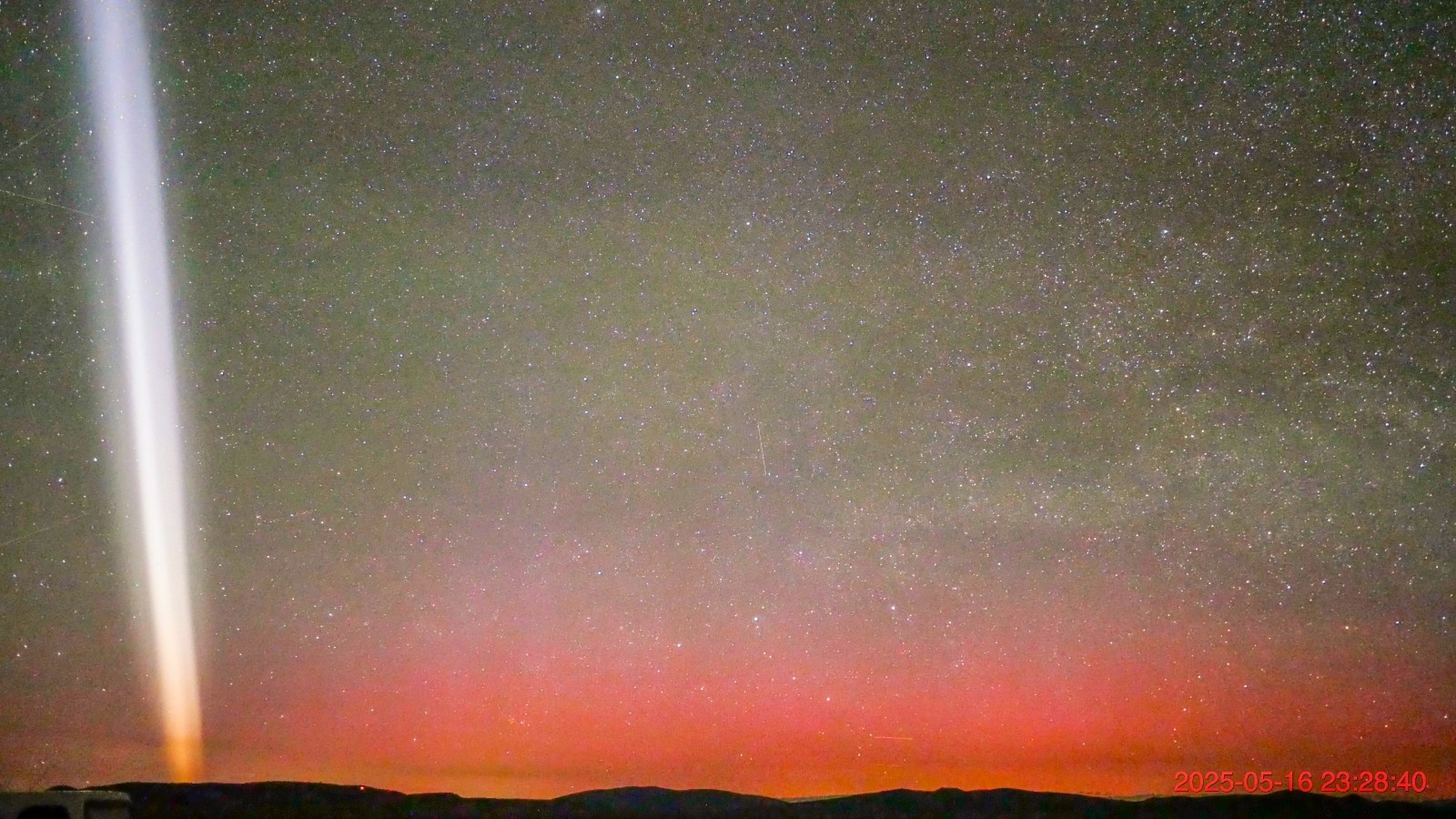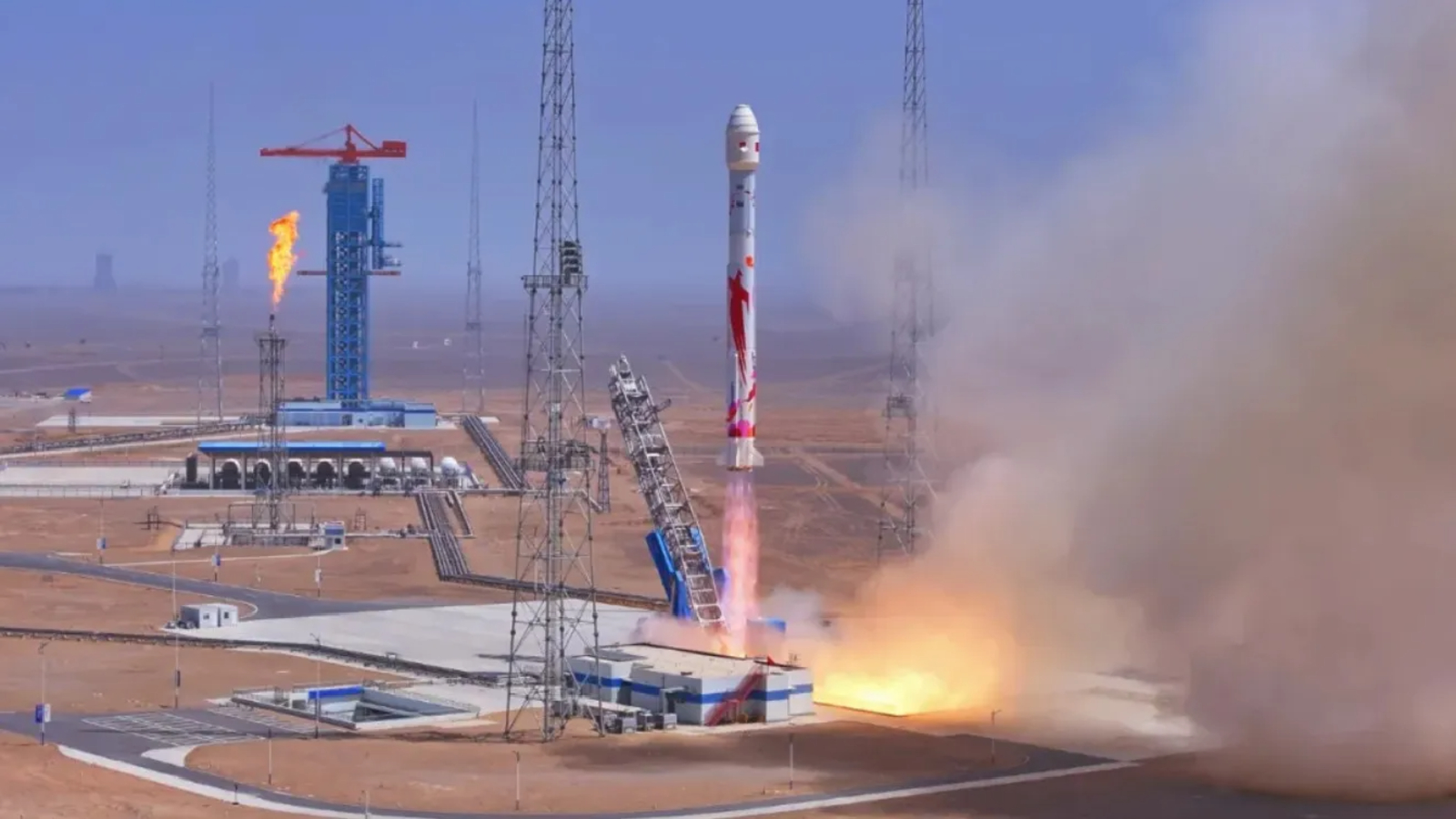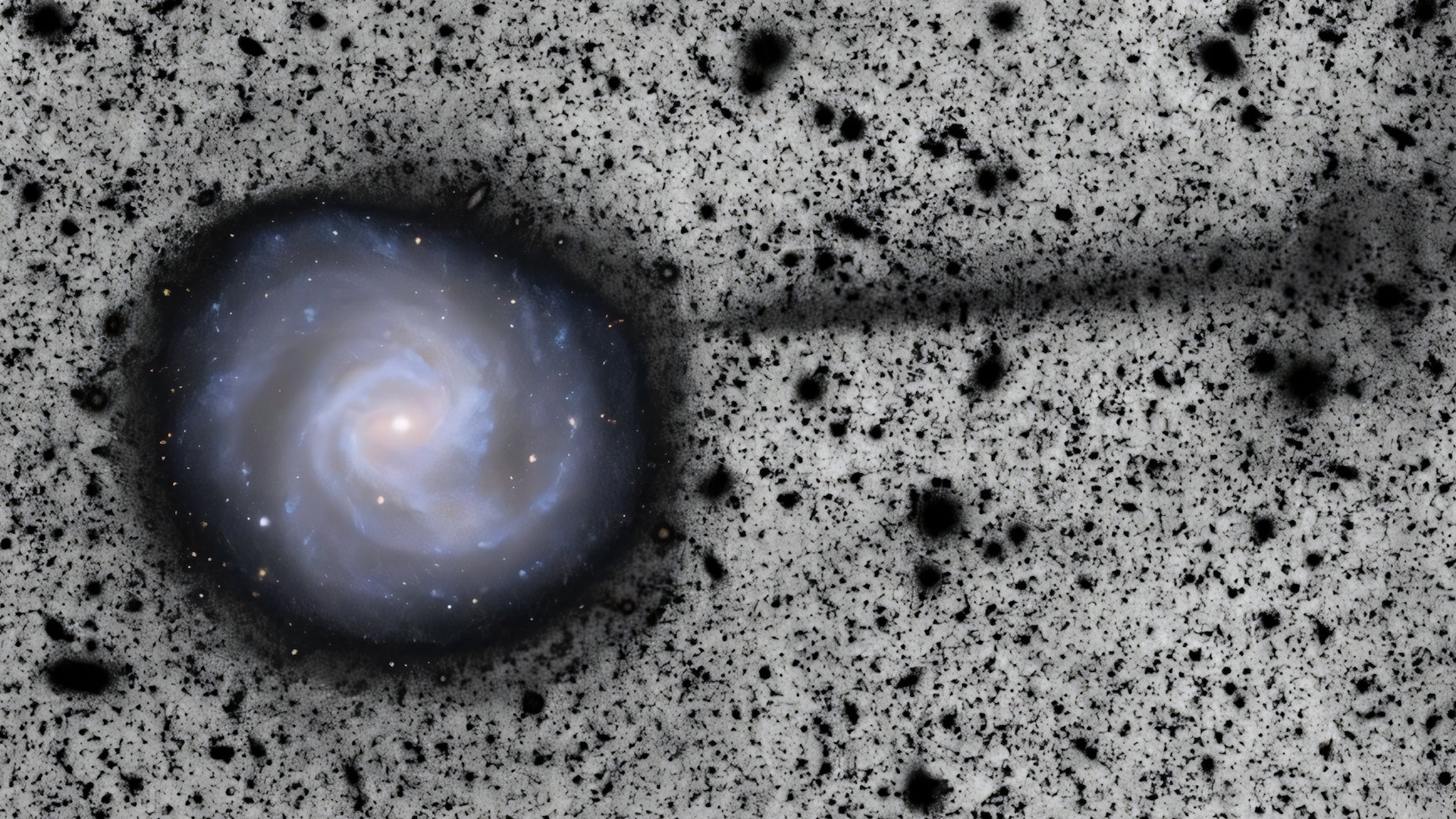Giant 'white streak' appears over multiple US states as Chinese rocket dumps experimental fuel in space
A recent launch of China's Zhuque-2E rocket triggered a giant white streak of light to appear above at least seven U.S. states after deploying six satellites into low-Earth orbit. The light show, which was visible in at least seven states, was the result of a "fuel dump," experts say.

A massive streak of white, aurora-like light recently appeared in the night sky above several U.S. states after a Chinese rocket released half a dozen satellites into orbit. The light show was triggered when the rocket dumped a new type of fuel into space before reentering the atmosphere, experts say.
The luminous streak appeared at around 1:24 a.m. ET on Saturday (May 17), hanging in the air for around 10 minutes before eventually fading away. It was photographed in at least seven states — Colorado, Idaho, Utah, Missouri, Nebraska, Washington and New Mexico — but may have been visible even further afield, according to Spaceweather.com.
Photographer Mike Lewinski snapped stunning shots of the streak from Crestone, Colorado (see above) and also managed to capture timelapse footage of the entire event. Meanwhile, photographer Jay Shaffer took a striking long-exposure photo of the streak in Taos County, New Mexico (see below).
In some places, the streak appeared alongside auroras that emerged during a G2-class geomagnetic storm, which was triggered earlier in the night when a cloud of charged particles ejected by the sun, known as a coronal mass ejection, slammed into Earth's magnetic field. As a result, many people who witnessed the streak assumed it was the aurora-like phenomenon known as STEVE, which creates long colored ribbons of light in the night sky.
However, what people actually saw was the aftermath of one of China's Zhuque-2E rockets, which launched from the Jiuquan Satellite Launch Center in northwest China at around 12:12 a.m. ET, according to Space News. The rocket released six satellites, each carrying various scientific instruments, before it burned up in Earth's upper atmosphere upon reentry.
Related: 10 bizarre phenomena that lit up the sky (and their scientific explanations)

There was initially some confusion about exactly how the rocket created the stunning light show. "The white streak may have been a de-orbit burn, or perhaps a circularization burn for the deploying satellites," Spaceweather.com representatives wrote.
Get the world’s most fascinating discoveries delivered straight to your inbox.
Others thought it may have been light from the rocket's second stage burning up in our skies, while some people suggested that it may have been an "ionospheric hole," created when rocket fuel reacts with chemicals in the upper atmosphere, triggering streaking aurora-like lights.
However, Jonathan McDowell, an astronomer at the Harvard and Smithsonian Center for Astrophysics who tracks satellite launches and reentries, later revealed on the social platform X that it was caused by a "fuel dump" at an altitude of around 155 miles (250 kilometers) before the rocket de-orbited. The ejected fuel, which trailed behind the rocket, froze into a ribbon of tiny frozen crystals that then reflected sunlight toward Earth's surface, making it shine in the night sky.

Similar light shows often occur when SpaceX's Falcon 9 rockets dump their fuel before re-entering the atmosphere. In these cases, the spacecraft is normally spinning as it dumps the fuel, creating luminous whirlpools of light. Recent examples of these structures, nicknamed SpaceX spirals, include a luminous vortex spotted above the U.K. in March, a "horned" spiral that appeared over mainland Europe in May 2024 and a distant swirl visible from Hawaii in January 2023, among others.
New type of rocket fuel
The Zhuque-2E rocket is a single-use orbital launch vehicle created by Chinese company LandSpace. It stands at around 160 feet (50 meters) tall and can launch up to 13,200 pounds (6,000 kilograms) of payloads into low-Earth orbit (LEO) — the region of space up to 1,200 miles (2,000 km) above Earth's surface, where the majority of Earth-orbiting satellites operate.
Unlike most rockets, which use hydrogen or kerosene-based fuels, Zhuque-2E uses a special hybrid of liquid oxygen and liquid methane, known as "methalox."
In July 2023, the rocket's predecessor, Zhuque-2, became the first methane-fueled rocket to reach LEO, beating the likes of SpaceX, which also uses methalox fuels in its gigantic Starship rocket but is yet to successfully get the spacecraft into a full orbital flight. China has now successfully launched four methane-powered rockets into space.
Methane is a desirable fuel source for rockets because it is easier to store and burns cleaner than hydrogen or kerosene. It can also potentially be produced on other planets, such as Mars, which makes it ideal for solar system exploration.

Harry is a U.K.-based senior staff writer at Live Science. He studied marine biology at the University of Exeter before training to become a journalist. He covers a wide range of topics including space exploration, planetary science, space weather, climate change, animal behavior and paleontology. His recent work on the solar maximum won "best space submission" at the 2024 Aerospace Media Awards and was shortlisted in the "top scoop" category at the NCTJ Awards for Excellence in 2023. He also writes Live Science's weekly Earth from space series.
You must confirm your public display name before commenting
Please logout and then login again, you will then be prompted to enter your display name.
